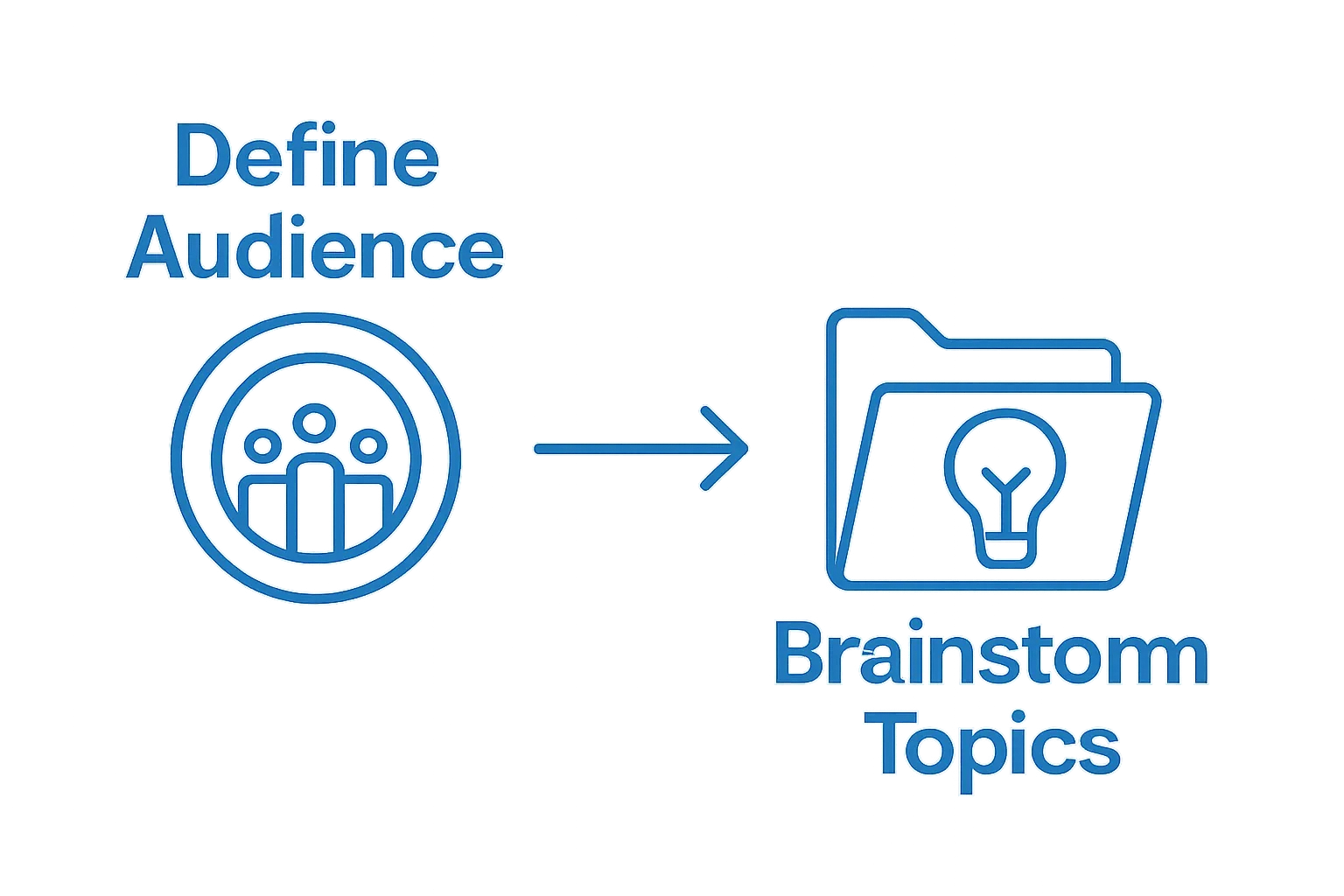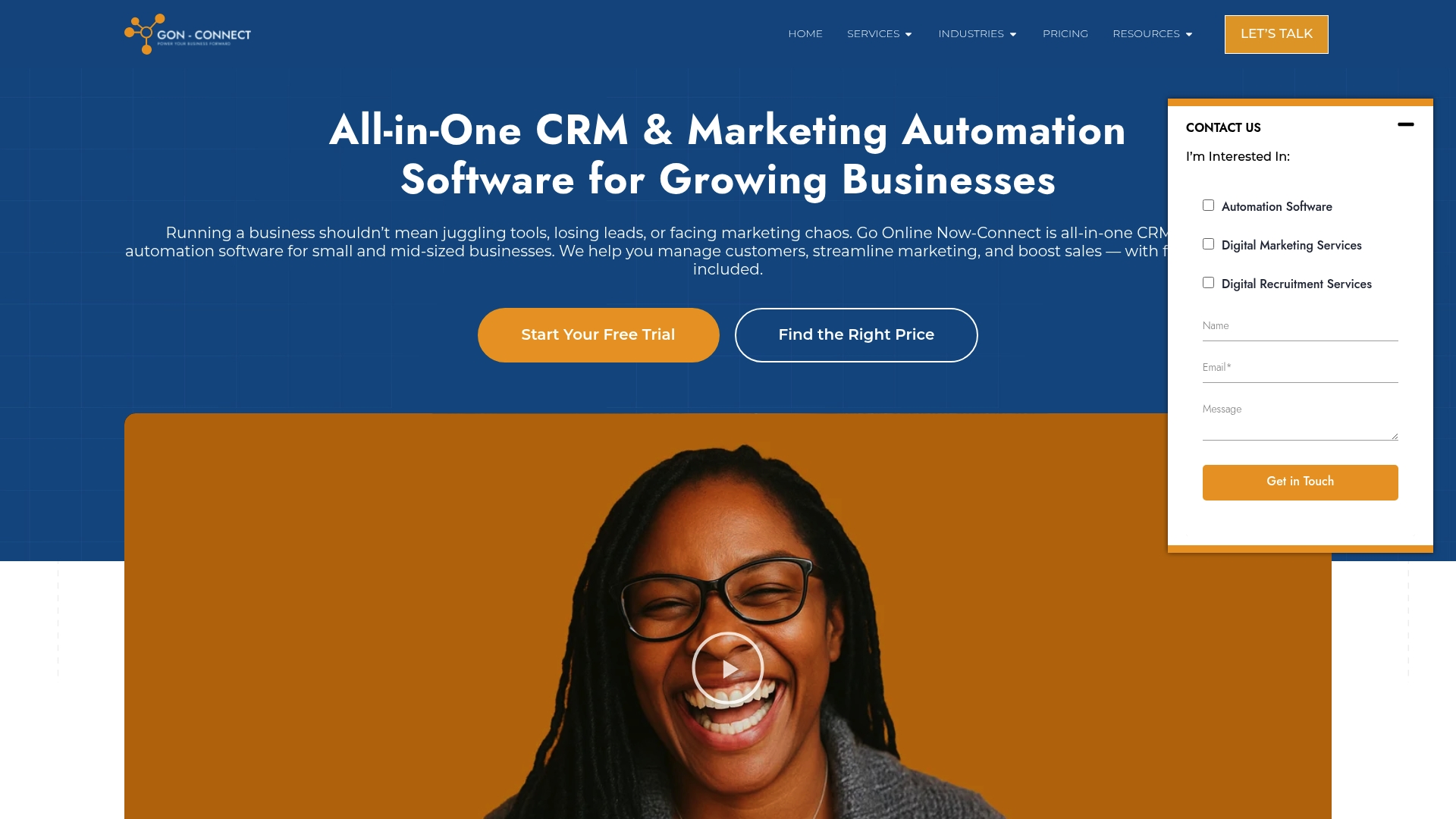Creating content that sticks is every marketer’s dream and for good reason. Research shows that well-defined audience targeting can increase engagement rates by over 50 percent compared to generic content. That sounds impressive, right? Most people still think it all comes down to having flashy graphics or clever writing. The biggest impact actually comes from understanding exactly who you are talking to before you type a single word.
Step 1: Define Your Target Audience
Defining your target audience is the foundational cornerstone of an effective content creation process. Without a crystal clear understanding of who you are creating content for, your efforts will scatter like unfocused buckshot instead of precisely hitting your intended audience. This critical initial step transforms your content strategy from a generic broadcast to a personalized communication channel.
Begin by conducting comprehensive demographic and psychographic research about your potential audience. You want to move beyond surface level characteristics like age and gender and dive deeper into understanding their motivations, challenges, aspirations, and digital behaviors. Successful content creators recognize that understanding your audience is more than collecting data points – it’s about developing genuine empathy and insight.
To map your target audience effectively, compile detailed personas that represent your ideal content consumers. These personas should include not just basic demographic information, but nuanced details like professional roles, pain points, preferred content consumption platforms, and typical online behavior patterns. Explore our social media target market tactics to gain deeper insights into audience segmentation strategies.
Utilize tools like Google Analytics, social media insights, and audience survey platforms to gather comprehensive data. Pay special attention to metrics that reveal audience interests, engagement levels, and content preferences. This investigative process will help you craft content that resonates authentically with your specific audience segment, dramatically increasing the likelihood of meaningful engagement and conversion.
The ultimate verification of a well-defined target audience is how precisely your subsequent content speaks directly to their needs, interests, and communication preferences. When your audience feels like you are speaking exclusively to them – not just broadcasting a generic message – you have successfully completed this crucial first step in the content creation process.

Step 2: Conduct Topic Research and Brainstorm Ideas
After defining your target audience, the next pivotal step in the content creation process is conducting thorough topic research and generating compelling content ideas. This stage transforms your understanding of your audience into actionable content strategies that will capture their attention and provide genuine value.
Start by leveraging multiple research channels to uncover topics that intersect with your audience’s interests, challenges, and search behaviors. Effective topic research goes beyond simple keyword hunting – it requires a deep understanding of your audience’s informational needs. Utilize tools like Google Trends, BuzzSumo, and Reddit to explore current conversations, emerging trends, and frequently asked questions within your niche.
Combine quantitative research methods with qualitative insights. Examine your audience’s social media discussions, review forums, and customer support inquiries to identify pain points and knowledge gaps that your content can address. Our social media target market tactics can provide additional strategies for mining audience insights effectively.
Brainstorming becomes a strategic process when you approach it systematically. Create a content ideation framework that includes multiple idea generation techniques. Mind mapping can help you explore topic variations, while reverse engineering competitor content can reveal unexplored angles. Consider hosting collaborative brainstorming sessions with team members from different departments to bring diverse perspectives into your content strategy.
To verify the quality of your research and brainstorming efforts, assess your generated ideas against three critical criteria: relevance to your target audience, potential for delivering unique insights, and alignment with your brand’s expertise. Strong content ideas will not only answer audience questions but also position your brand as a thought leader in your industry. The ultimate test is whether your proposed topics spark genuine curiosity and promise actionable value for your target audience.
Step 3: Create an Outline and Content Structure
With your audience defined and topics researched, the next crucial phase is creating a robust content outline that transforms your ideas into a coherent, engaging narrative. An effective outline serves as a strategic roadmap, guiding your content creation process and ensuring your final piece delivers maximum value to your audience.
Developing a comprehensive outline is more than just listing topics – it’s about crafting a logical flow that guides readers seamlessly through your content. Begin by organizing your key research insights and brainstormed ideas into a hierarchical structure. Start with a compelling main thesis or central argument that will anchor your entire piece. Each subsequent section should build upon the previous one, creating a narrative progression that maintains reader engagement and comprehension.
Explore our content strategy techniques to refine your outlining approach. When structuring your outline, consider the psychological journey you want to take your readers through. Anticipate potential questions, address potential knowledge gaps, and create natural transition points that maintain a smooth, conversational tone. Your outline should include clear sections that provide context, deliver core information, offer practical insights, and conclude with actionable takeaways.
Practical tools can significantly streamline your outlining process. Digital platforms like Workflowy, MindMeister, or even simple Google Docs can help you create dynamic, flexible outlines. The most effective outlines balance structure with adaptability – they provide a clear framework while remaining open to refinement as your content develops. Include placeholder sections for potential examples, case studies, or expert quotes that can add depth and credibility to your piece.
To verify the effectiveness of your outline, assess it against three critical criteria. First, does it comprehensively address the core topic from your audience’s perspective? Second, does the structure create a logical and engaging narrative flow? Third, would someone unfamiliar with the subject be able to understand the key points by reading your outline alone? When your outline passes these tests, you are ready to move forward with confident, purposeful content creation.
Step 4: Produce and Format Your Content
The content production stage transforms your carefully crafted outline into a compelling narrative that speaks directly to your target audience. Successful content creation is about striking a delicate balance between informative depth and engaging readability. Your goal is to translate research and strategic planning into a piece that not only informs but also captivates your readers from the first sentence.
Begin by drafting your content with a focus on maintaining the natural flow established in your outline. Write conversationally, as if you are explaining the topic to a knowledgeable friend. Avoid technical jargon and complex language that might alienate your audience. Learn more about our content marketing best practices to refine your writing approach.
Formatting plays a critical role in content digestibility. Break your text into manageable paragraphs, use descriptive subheadings, and incorporate visual elements that enhance understanding. White space is your ally – short paragraphs and strategic line breaks make your content more approachable and less intimidating. Consider using bullet points or numbered lists to highlight key information, but use them sparingly to maintain narrative flow.
As you write, continually refer back to your target audience research. Speak directly to their pain points, aspirations, and preferred communication style. Incorporate real world examples, personal anecdotes, or case studies that demonstrate your understanding of their challenges. The most powerful content feels like a personalized conversation, not a generic broadcast.
To verify the quality of your content production, assess your draft against three crucial criteria. First, does it comprehensively address the topic from your audience’s perspective? Second, is the language clear, engaging, and free from unnecessary complexity? Third, would your target audience find genuine value and actionable insights in this piece? When your content meets these standards, you have successfully transformed your strategic outline into a compelling narrative that resonates with your intended readers.

Step 5: Edit and Optimize for Quality
The editing and optimization phase is where good content transforms into exceptional content. This critical stage is not merely about correcting grammatical errors, but about refining your message to its most potent and impactful form. Editing is an art of precision, where every word is scrutinized for clarity, engagement, and strategic purpose.
Begin your editing process by creating emotional and temporal distance from your initial draft. Wait at least several hours, or ideally a day, before returning to your content with fresh eyes. This perspective allows you to review your work more objectively, identifying areas of improvement that were not apparent during the initial writing. Explore our local SEO optimization strategies to understand how precision can elevate your content’s performance.
Your editing workflow should encompass multiple layers of refinement. Start with a comprehensive structural review, ensuring your content maintains the logical flow established in your original outline. Examine the transitions between sections, verifying that ideas connect smoothly and the narrative progression remains coherent. Next, focus on sentence level optimization. Eliminate unnecessary words, replace passive constructions with active voice, and ensure each sentence serves a clear purpose.
Optimization extends beyond language refinement into strategic enhancement. Consider your content’s search engine performance by naturally integrating relevant keywords, creating descriptive headings, and ensuring your piece provides comprehensive coverage of the topic. Use tools like Hemingway App or Grammarly to identify complex sentences, passive voice, and potential readability improvements. Read your content aloud to catch awkward phrasings and ensure a conversational tone that resonates with your target audience.
To verify the quality of your editing process, assess your optimized content against three critical criteria. First, does it maintain the core message and intent of your original draft? Second, is the language clear, concise, and engaging? Third, would your target audience find this piece valuable, informative, and easy to consume? When your content meets these standards, you have successfully transformed your initial draft into a refined, strategic piece of communication.
Step 6: Publish and Promote Your Content
Publishing and promoting your content is the critical final stage that determines whether your meticulously crafted piece reaches and resonates with your intended audience. This step transforms your content from a static document into an active, engaging communication tool that can drive meaningful connections and potential conversions.
Choose your publishing platforms strategically, considering where your target audience is most likely to consume content. This might include your own website, industry-specific blogs, social media channels, or professional networks. Learn how to make social media work effectively for your business to maximize your content’s visibility and impact. Ensure your content is formatted appropriately for each platform, understanding that a LinkedIn post will require a different approach compared to a blog article or Instagram share.
Promotion is not a one-size-fits-all strategy but a nuanced approach tailored to your specific audience and content type. Develop a multi-channel promotion plan that goes beyond simple sharing. This might include creating teaser snippets for social media, developing complementary visual content like infographics or short videos, and engaging with relevant online communities where your target audience congregates. Consider email newsletters, targeted social media ads, and direct outreach to industry influencers who might find your content valuable.
Track your content’s performance using analytics tools to understand its real-world impact. Monitor metrics like views, engagement rates, time spent on page, and social shares. These insights will not only help you understand how your current piece is performing but also provide valuable guidance for future content creation strategies. Pay attention to audience feedback, comments, and interactions to gain deeper insights into what resonates with your readers.
The table below provides an overview of recommended tools and platforms mentioned in the guide, with their main uses during the content creation process.
| Tool/Platform | Main Use |
|---|---|
| Google Analytics | Audience insights and data |
| Social Media Insights | Understanding digital behaviors |
| Survey Platforms | Gather audience feedback |
| Google Trends | Topic and trend research |
| BuzzSumo | Research trending topics |
| Audience discussion mining | |
| Workflowy | Content outlining |
| MindMeister | Visual mind mapping |
| Google Docs | Creating and editing outlines |
| Hemingway App | Edit for readability |
| Grammarly | Grammar and style checks |
To verify the success of your publishing and promotion efforts, assess your content’s performance against three key indicators. First, did it reach your intended audience? Second, are you seeing meaningful engagement beyond simple view counts? Third, does the content generate the desired response or action from your audience? When your content meets these criteria, you have successfully completed the content creation process, transforming your initial strategic vision into a powerful communication tool.
Below is a summary of the six main steps in the content creation process, including their key aims and what each accomplishes for your content strategy.
| Step | Key Aim | What You Achieve |
|---|---|---|
| 1. Define Target Audience | Gain deep audience understanding | Content tailored to genuine needs |
| 2. Topic Research & Brainstorming | Generate relevant, valuable topics | Strong content ideas that resonate |
| 3. Outline & Content Structure | Organize coherent narrative flow | Logical, readable, focused content |
| 4. Produce & Format Content | Draft engaging, valuable narrative | Compelling, clear, audience-centric copy |
| 5. Edit & Optimize | Refine for quality and impact | Polished, error-free, optimized content |
| 6. Publish & Promote | Maximize audience reach & engagement | Content that drives visibility and results |
Turn Your Content Strategy into Measurable Growth Today
You’ve just learned how vital audience research, topic selection, and content mapping are to mastering the content creation process. Many businesses struggle to keep this process focused, especially when switching between disconnected tools or relying on guesswork instead of real data. Does your current strategy feel scattered, with ideas lost between spreadsheets, emails, and clunky platforms? You deserve a smarter path to content excellence. Explore how our Digital Marketing solutions can help you eliminate the guesswork and put strategy into action.

Experience the difference of a unified system with Go Online Now-Connect, where your audience insights, content calendars, email automation, and performance analytics work together in one affordable, transparent platform. See how real human support and done-for-you setup take your content from outline to published success, without the tech migraine. Discover your next move for smarter content creation and digital growth by visiting our main site today. Your best-performing content starts with a single, strategic step.
Frequently Asked Questions
How do I define my target audience for content creation?
To define your target audience, conduct demographic and psychographic research to understand their motivations, challenges, and digital behaviors. Develop detailed personas that represent these ideal consumers, including their interests and online behavior patterns.
What tools can I use for topic research during content creation?
You can use tools like Google Trends, BuzzSumo, and Reddit to uncover topics that resonate with your audience. Analyzing social media discussions and customer inquiries can also help identify pain points and knowledge gaps that your content can address.
Why is creating an outline important in the content creation process?
Creating an outline is crucial as it provides a structured roadmap for your content. It ensures a logical flow, helping readers engage with your narrative and making sure that all key points are addressed clearly.
How can I optimize my content for better engagement after writing?
To optimize your content, focus on clear, engaging language and effective formatting. Integrate relevant keywords naturally, create descriptive headings, and utilize tools for readability improvement. Additionally, ensure your content is valuable and engaging for your target audience.
Recommended
- Understanding the Content Creation Process in Digital Marketing – Go Online Now
- Understanding a Content Marketing Strategy Guide – Go Online Now
- Content Marketing: Best Practices for Success – Go Online Now
- Understanding Content Marketing Strategy 2025 – Go Online Now
- Content Creation Workflow for 2025: A Complete Guide

